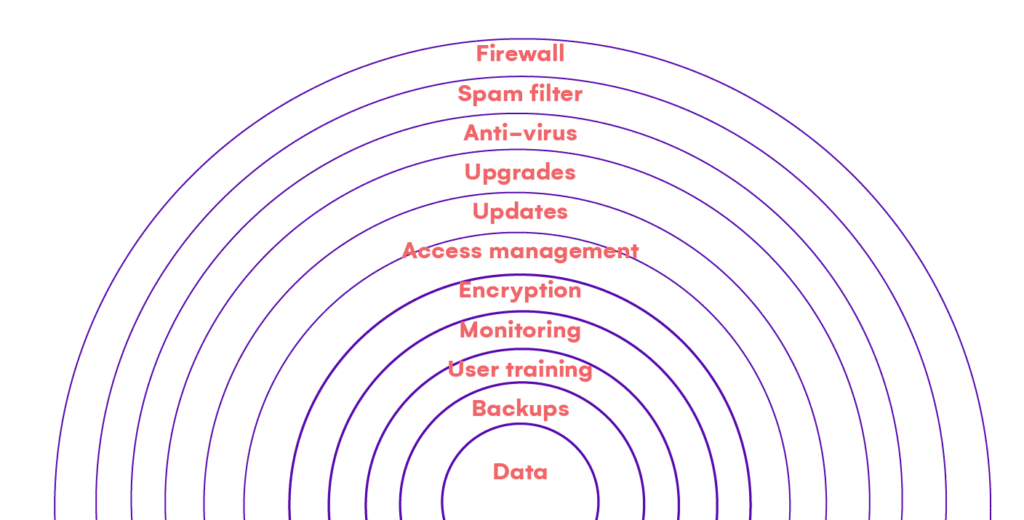What is defense-in-depth?
Table of contents
The logic behind using multiple layers of defense has been around since ancient warfare times – if you rely on a single defensive mechanism, and it fails, you’re done. Extra layers and contingencies of defense-in-depth allow you to mitigate risks much more easily in a best case scenario, and make it very hard and time consuming for malicious actors to break your defenses in a worst case scenario.
Defense-in-depth in Microsoft 365 refers to a multi-layered security strategy designed to protect an organization’s data, users, and infrastructure from threats. Instead of relying on a single security measure, defense-in-depth implements multiple overlapping security controls to reduce risk, detect potential breaches, and minimize damage in case of an attack.

Microsoft 365 defense-in-depth
For Microsoft 365 admins, this approach includes:
- Identity and access management (e.g., Entra ID, multi-factor authentication) to protect user accounts.
- Threat protection (e.g., Microsoft Defender for Office 365) to detect and block malware, phishing, and other cyber threats.
- Data protection (e.g., sensitivity labels, encryption, and data loss prevention) to safeguard sensitive information.
- Monitoring and auditing (e.g., Microsoft Purview, audit logs) to detect suspicious activities and enforce compliance.
The key strength of the defense-in-depth model lies in its ability to counter a wide range of threats due to the amount of mechanism. As organizations expand their users, systems, and networks, their exposure to risks also grows. If an attacker breaches the network, the multiple security layers—such as firewalls, antimalware solutions, intrusion detection systems, and physical safeguards—work together to slow their progress, giving IT teams crucial time to respond and mitigate the attack.
